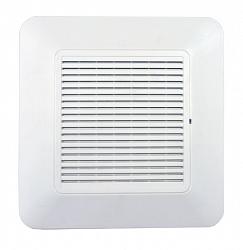Subscribe
You will receive on your e-mail all the news about the product, updating software and documentation!
Wi-Fi Enterprise Access Point WEP-12ac
Overview
Specifications
Reviews
- High-performance solution based on Broadcom chipset
- 802.11 ac (5GWi-Fi) support
- PoE+, leased lines
- Work in a cluster without a dedicated server (up to 64 devices)
- Seamless roaming
- Modern means of authentication and encryption
- up to 400 user maintenance
Solution for businesses
WEP-12ac provides high-speed, secure, affordable and easy-to-use wireless network that combines a variety of features and services needed for corporate clients. WEP-12ac will become a universal solution for setting up a wireless network with a large number of users and high traffic (office, government offices, conference rooms, laboratories, hotels, etc.).
Wireless
Due to IEEE 802.11 ac standard support the access point WEP-12ac provides data rates of up to 1 Gbit/s. Six dual-band antennas and large radius coverage (up to 200m) make WEP-12ac a universal access point when organizing a corporate network.
Security
For the corporate environment there are modern authentication and encryption technologies, which provide protection of personal data and the security of the corporate environment. In an enterprise environment a dynamic key is used individually for each client working at the moment.
Power supply
Support for PoE+ allows installation in any location, regardless of the location of power supplies, saves on the cost of power cables, makes installation easy and quick. Power is supplied from the mains via power adapter or a separate power cable when using sequential circuit of connecting devices "point-to-point".
Interfaces
1 The number of channels and the value of the maximum output power will vary according to the rules of radio frequency regulation in your country.
2 The maximum wireless data rate is defined according to IEEE 802.11n/ac standard. The real bandwidth can be different. Conditions of the network, environment, the amount of traffic, building materials and constructions and network service data can decrease the real bandwidth. The environment can influence on the network coverage range.
- 2 x Ethernet 10/100/1000Base-T (RJ-45)
- Console (RJ-45)
- IEEE 802.11a/b/g/n/ac standards support
- Data aggregation, including A-MPDU (Tx/Rx) and А-MSDU (Rx)
- WMM-based packet priorities and planning
- Dynamic frequency selection (DFS)
- Hidden SSID support
- 32 virtual access points
- External access points detection
- APSD support
- WDS support
- Automatic speed negotiation, duplex mode negotiation, and MDI/MDI-X switch-over
- VLAN support
- 802.1X authentication support
- DHCP client
- IPv6 support
- LLDP support
- ACL support
- Cluster creation with the capacity of up to 64 access points
- Load balancing for multiple access points
- Automatic synchronization of access points configurations in cluster
- Single Management IP—single address for access points management in cluster
- Automatic frequency channel allocation for multiple access points
- Authentication via RADIUS server
- Profile-based packet priorities and planning
- Bandwidth restriction for each SSID
- Modification of WMM parameters for each radio frequency interface
- Centralized authorization via RADIUS server (WPA Enterprise)
- WPA/WPA2 encryption
- Captive Portal support
- E-mail notifications about system events
- Frequency range: 2400–2480 MHz, 5150–5850 MHz
- CCK, BPSK, QPSK, 16QAM, 64QAM, 256QAM modulations
- Embedded dual-band antennas
- 3х3 MIMO support
- Two embedded Broadcom BCM43460 chips (IEEE 802.11b/g/n/a/ac)
- 802.11b/g/n: 1–13 (2412–2472 MHz)¹
- 802.11a/n/ac: 36–64 (5180–5320 MHz)
100–144 (5500–5720 MHz),
149–165 (5745–5825 MHz)¹
- 802.11n: 450 Mbps
- 802.11ac: 1300 Mbps
- 2.4 GHz: up to –98 dBm
- 5 GHz: up to -94 dBm
- 2.4 GHz: up to 19 dBm1
- 5 GHz: up to 19 dBm1
- Power consumption below 14W
- Broadcom BCM53016/BCM58522 processor
- 128 MB NAND Flash
- 256 MB RAM DDR3
- Power supply:
– PoE+ 48V/54V (IEEE 802.3at-2009)
– 12 V DC - Operating temperature from +5°C to 40°C
- Dimensions (WхHхD): 224х42х235 mm
- Software update and configuration via DHCP Autoprovisioning
- Remote control via Telnet, SSH
- Web interface
- SNMP
1 The number of channels and the value of the maximum output power will vary according to the rules of radio frequency regulation in your country.
2 The maximum wireless data rate is defined according to IEEE 802.11n/ac standard. The real bandwidth can be different. Conditions of the network, environment, the amount of traffic, building materials and constructions and network service data can decrease the real bandwidth. The environment can influence on the network coverage range.




